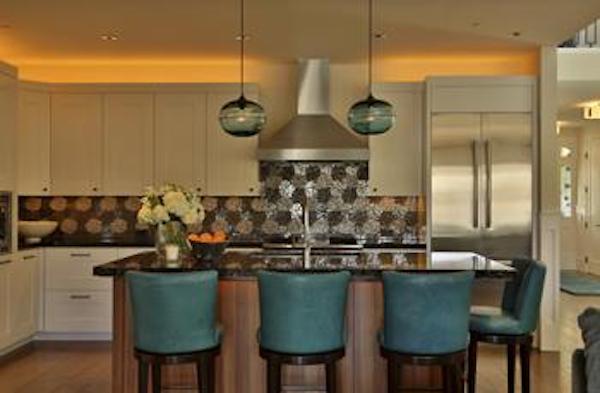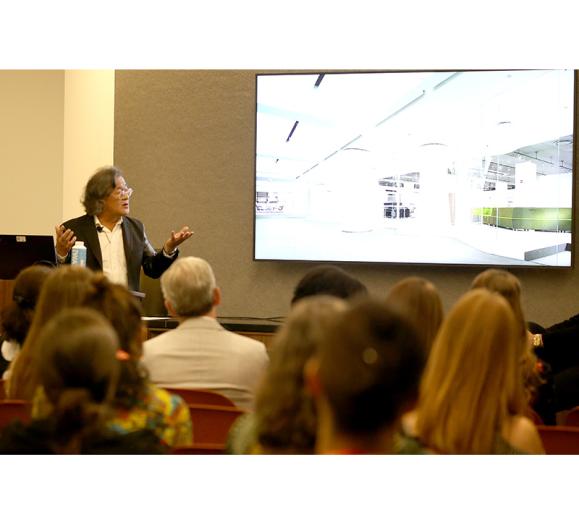Q: I have a client with 4000K LED tape light on top of his cabinets. I need to make it look like 2700K, but I have never dealt with gels or colored lenses. What would you recommend and how would I find the correct product?
A: We are dealing with this situation on a regular basis now. Many people who were early adopters of LED products did not have the range of color temperatures to choose from that are available now. Since these products are still going to last 16 to 17 years, they are kind of stuck. Lee Filters is now making filters to correct the color temperature of LED lighting. Take a look at the #622 filter color. You can get a gel material in sheet form that will color correct your LED strip. The challenge is that it is so lightweight there is not a good way to keep it in place. For a similar situation, we went to a company that had sheets of colored glass, like a place that makes and repairs stained glass windows. We had them cut strips of amber glass that were 2 inches wide and 24 inches long, and then laid them on top of the LED strip. The reality is that it might be less expensive simply to change out the existing 4000K strips with 2700K strips. The 4000K strips work really well in a closet above the clothing to help differentiate between black, navy blue and charcoal gray. This holds true for above the washer and dryer when you are trying to match socks. So what I am recommending is a possible creative reuse of the existing lighting.
Related Question
Q: Just as I understand the concept of color temperature (Kelvin), now CRI is being bandied about as LEDs come into the market. What is it exactly?
A: I am right there with you. From the beginning of my career, the terms color temperature and color rendering index (CRI) have always had an air of mystery.
I thought I just had to accept them, like daylight savings time and no-host bars.
Color temperature is a description of the warmth or coolness of a light source. When a piece of metal (often mysteriously referred to as a black body radiator) is heated, the color of light it emits will change. This color begins as red in appearance and then slowly turns to orange, yellow, white, and then blue-white to deeper colors of blue. The temperature of this metal is measured in degrees Kelvin. What’s confusing is that higher Kelvin temperatures are cool and lower temperatures are warm; directly opposite to the temperature in an oven. Color temperature is not an indicator of physical heat. Cool light is preferred for visual tasks because it produces higher contrast than warm light. Warm light is preferred for living spaces because it is more flattering to skin tones.
CRI is a measurement of a light source’s accuracy in rendering different colors when compared to a reference light source with the same correlated color temperature. The closer a light source is to a score of 100, the better its color rendering. The higher the CRI, the better the visual perception of colors. What’s confusing to me is that an incandescent lamp gets a score of 100, even though it shifts colors into the yellow range. When it comes to alternative light sources, the basic premise is that an LED or CFL alternative with a high CRI is close in its rendering of colors when compared to the lamp it is replacing. Now my head hurts.







